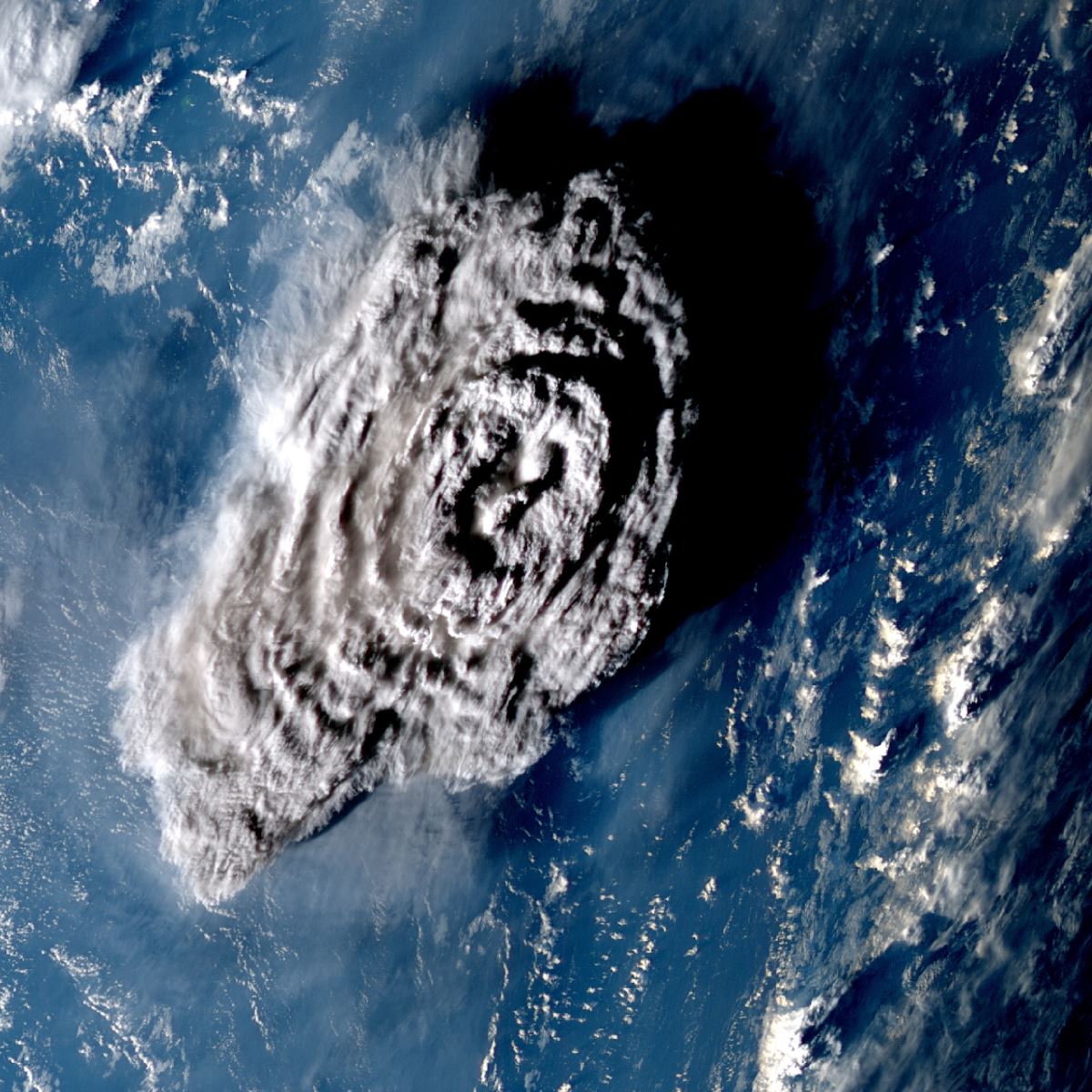On 15 January 2022, the Hunga Tonga–Hunga Volcano, located in the Kingdom of Tonga south of the Pacific Ocean, erupted, causing an explosion 500 times stronger than the atomic bomb that hit Hiroshima. Heard thousands of kilometers away, this volcanic explosion was the strongest throughout the last 30 years.
The eruption caused tsunami waves reaching 4 feet high; they hit Tongatapu, the largest island of the Kingdom of Tonga. The tsunami waves also hit Fiji, Samoa, Japan, Australia, the USA, and Peru. Moreover, the volcanic eruption caused a communication cut-off in Tonga, as well as turned the Peruvian coasts black due to a massive oil leak.
How the Tonga volcano has been felt around the world
Hunga Tonga is one of a million submarine volcanoes that erupt violently once a millennium. Although it is a submarine volcano, the eruption plume rose to the third layer of the atmosphere, namely the mesosphere, according to a recent study published by Oxford University. The Tonga volcano recorded an estimated plume height of 58 kilometers, breaking the 40-km record of the Mount Minatobo volcano in the Philippines, which erupted in 1991, and the 30-km record of the Chichon volcano in Mexico, which erupted in 1982.
Volcanoes usually release gases, ash, and water vapor. The water vapor produced by the Tonga volcano was enough to fill 58,000 Olympic swimming pools. This amount of water vapor is four times that of the Philippine volcano.
Tonga eruption's plume was the highest ever recorded for a volcano
The height of volcanoes is usually measured by measuring the temperature at the volcano peak and comparing it to the standard temperatures at these heights. This method works in the troposphere since the temperature decreases as the altitude increases. However, it does not work in the mesosphere since the temperature rises as the Ozone Layer absorbs ultraviolet radiation.
 Source: Reuters.com
Source: Reuters.com
Therefore, scientists have innovated a new method based on the parallax effect phenomenon. The parallax effect explains the displacement or difference in the position of an object viewed from different levels. Three satellites were set around Tonga Volcano to record the rapid change and take photos every ten minutes. This technology enables researchers to build a mechanized system to measure the smoke plume of any volcano.
It is important to measure the plume to avoid volcanic ash, which is harmful to jet engines. Still, scientists wonder: Why was the plume so high? Do the emitted gases have an impact on the Earth's climate?
References
aljazeera.com
edition.cnn.com
edition.cnn.com
jpl.nasa.gov
ox.ac.uk
sciencedaily.com
Cover image Credit: 1NewsNZ/Twitter